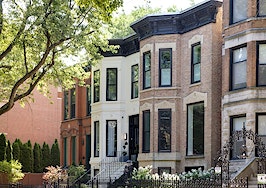- Unless sellers respond in record numbers, low inventories will impact the spring season, according to the nation’s top six January market reports that cover sales, prices and inventories.
- The year opened with strong sales and even stronger prices, forces that put even more pressure on supplies to maintain the recovery’s momentum over the months to come.
- Lack of affordability has slowed sales and prices in the West as Southern markets move into leadership positions. Slower demand and inventory shortages plague many Midwestern and Northeastern markets.
January is the month when real estate markets traditionally take a breather to restock their shelves for the spring season.
In the final quarter of 2016, record demand powered by concern over mortgage interest rates and rising prices encouraged buyers to clear the shelves of depleted supplies — and strong sales continued into the new year, too.
An analysis of the January market reports from the National Association of Realtors (NAR), Redfin, Re/Max, Trulia and Zillow — and a February report from realtor.com — provides a consensus on the important trends shaping today’s residential real estate economy.
Whether markets will be able to resupply MLSs with adequate numbers of homes for sale to meet demand in time for the coming sales season tops the list of concerns.
The inventory crisis deepens
Declining inventories of homes for sale is a problem that’s been notable since the beginning of housing recovery in 2013 and has grow more serious over the past two years. Inventories in January 2015 were 1.87 million and have declined to 1.69 million in January, according to NAR — a loss of 180,000 properties, or 9.6 percent.
With home sales becoming a year-round business, demand tends to pick up following the holidays. And with inventories ending 2016 at multi-year lows, the outlook for the coming spring season is increasingly grim.
New listings are having an impact, according to some (but not all) of the January market reports. Supplies still have a long way to go to reach levels of last spring, which had shorter supplies than 2015.
Here are some comments from the reports:
- “The residential real estate market now has a brand new low level of supply,” wrote Jonathan Smoke, chief economist of realtor.com.
- “Sellers are still warming the bench as the supply picture looks weaker than demand. This is the first January in three years in which new listings fell short of the previous year,” said Redfin chief economist Neela Richardson.
- “Overall inventory has fallen year-over-year nationwide in each of the past 4 months,” said Svenja Gudell, chief economist at Zillow.
Shortages are forcing prices above sustainable levels in more and more markets. And affordability has become such a critical issue that economists are finding new ways to measure it.
Recently, NAR launched the Realtors Affordability Distribution Curve and Score, and Trulia’s introduced a Mismatched Markets report to help find markets that meet a buyer’s budget.
The table below is a snapshot of the current inventory crisis as of the end of January (with the exception of realtor.com, which reports February data).
January inventories at a glance
| Source | Month over month | Year over year | Days on Market | Comments |
| NAR | 2.4% | -7.1% | 50 | Has fallen year-over-year for 20 straight months |
| realtor.com | 2% | -11% | (February data) | |
| Redfin | -0.5% | -12% | -7 | 5.1% drop in new listings |
| Re\Max | -4.3% | -16.9% | -5 | Inventory declined for 99 months |
| Zillow | NA | -2.9% | NA | Supplies of lowest priced homes down 4.6% |
Sales still strong; prices soar
Strong sales kicked off the new year at a healthy pace, up from 3.8 percent to 5.8 percent over January 2016, and realtor.com reported that February was even stronger.
Reflecting the tight demand, prices rose even faster, from 4.3 to 7.1 percent — a trend that might encourage sellers to list their prices in the coming spring market higher than they might otherwise.
January homes sold faster in every report, a trend that might modify as more properties come on market in February and March, should rates rise as expected. Redfin reported January was the fastest month on record.
All eyes will be on February inventory totals to set the tone for the spring season. Conditions could not be more ideal for sellers who can pick their time to list.
Retiring boomers, investors and move-up buyers who have some flexibility are looking at perfect conditions to sell; should sellers wait another year, prices may be even higher, depending on price range, but demand will suffer as buyers (especially first-time buyers) find themselves increasingly priced out of local markets.
January market reports at a glance
| Source | Monthly Sales Trend | Annual Sales Trend | Monthly Price Trend | Annual Price Trend | Median Sale Price | Days on Market or Months Supply | Comments |
| NAR | 3.3% | 3.8% | N/A | 7.1% | $228,900 | 50 days or 3.6 months supply | January’s price increase was the fastest since last January (8.1 percent) and marks the 59th consecutive month of year-over-year gains. |
| realtor.com | N/A | N/A | 8% | 8% | $250,000 | 90 days | February data |
| Redfin | -25.9% | 5.6% | -2.4% | 7.0% | $261,100 | 59 days | Fastest sales on record |
| Re/Max | NA | 4.5% | -3% | 4.3% | $208,500 | 66 days | 10th month of price increases |
| Trulia | 3.3% | 4.0% | N/A | Starter: 7.6% Trade-up: 6.3% Premium: 7.2% |
Starter: $164,920 Trade-up: $285,895 Premium: $595,262 |
N/A | Trulia reports price and inventory trends on a quarterly basis by price categories. |
| Zillow | N/A | N/A | 0.6% | 6.8% | $193,800 | 9.0% | Zillow does not report sales and uses its AVM for values. |
Geographic trends
The West led sales in January, up 6.6 percent in NAR’s report but Zillow reported slower sales in the Bay Area and Los Angeles due to affordability problems.
Denver was Redfin’s fastest-selling market, followed by Seattle and Oakland. Zillow only ranks two of its top 10 fastest-growing metros in the west: Seattle and Portland.
Southern markets like Nashville, Memphis and Lakeland, Florida, are seeing prices rise quickly, and Redfin ranks Dallas no. 1 in the nation for fast-rising prices.
Existing-home sales in the South in January rose 3.6 percent to an annual rate of 2.31 million and are now 3.1 percent above January 2016. The median price in the South was $201,400, up 9.2 percent from a year ago, according to NAR. Ten of Zillow’s faster growing large markets are located in the South.
In the Midwest, existing-home sales decreased 1.5 percent to an annual rate of 1.29 million in January, 0.8 percent below a year ago.
However, prices reached a median of $174,900, up 6.5 percent from a year ago, according to NAR. Zillow ranked Minneapolis, and Detroit among metros with the largest annual declines in inventory.
January existing-home sales in the Northeast jumped 5.3 percentage points to an annual rate of 800,000, and are now 6.7 percent above a year ago.
The median price in the Northeast was $253,800, which is 2.5 percentage points above January 2016.
Redfin reported that Buffalo, New York, saw sales decline 9.9 percent and had the largest overall decline in overall inventory, falling nearly 40 percent in a year, followed by Portsmouth, New Hampshire, and Rochester, New York.
Steve Cook is editor and co-publisher of Real Estate Economy Watch. Visit him on LinkedIn and Facebook.












